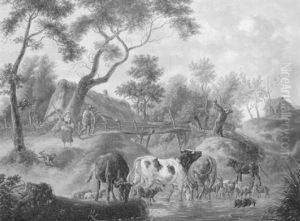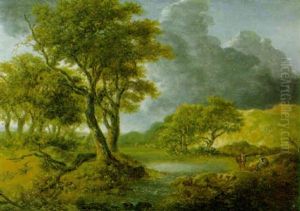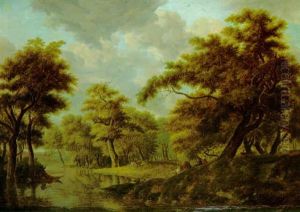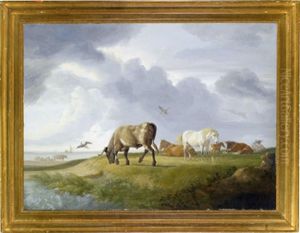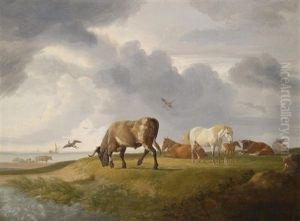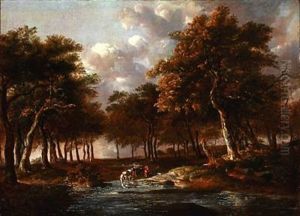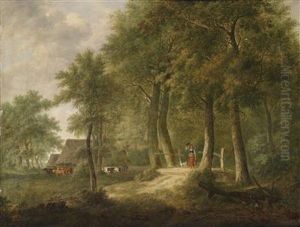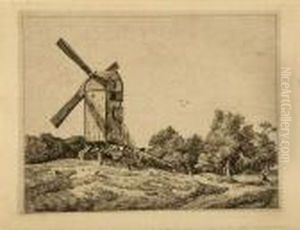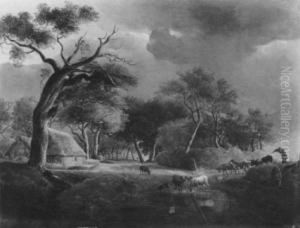Johann Heinrich Menken Paintings
Johann Heinrich Menken was a German artist, primarily known for his work as a printmaker and illustrator. Born on December 15, 1768, in Bremen, Germany, Menken developed an interest in the arts at an early age. His initial training came from his father, who was a painter and engraver. He later studied at the Vienna Academy, where he honed his skills and developed a distinct style that combined elements of Romanticism and Classicism.
During his career, Menken created a substantial body of work, which includes engravings, etchings, and drawings. His subjects often encompassed historical events, literary scenes, and portraits. Menken was not only skilled in producing his own compositions but was also adept at interpreting the works of others. He created illustrations for books, helping to bring literary characters and stories to life for readers of the time.
Menken's work was recognized for its detail and precision, and he was considered a master of the stipple engraving technique, which involves creating images with numerous small dots to achieve gradations of tone. This technique allowed him to achieve a high level of detail and subtlety in his prints, which were widely appreciated for their artistic quality.
Despite his contributions to the field of printmaking, Johann Heinrich Menken is not as widely known as some of his contemporaries. Nevertheless, his work had an influence on the artists and illustrators of his time. He died on May 13, 1831, in Bremen, leaving behind a legacy of intricate artworks that continue to be studied and admired by art historians and enthusiasts. Menken's contributions to the visual arts are a testament to the rich artistic culture of Germany during the late 18th and early 19th centuries.


